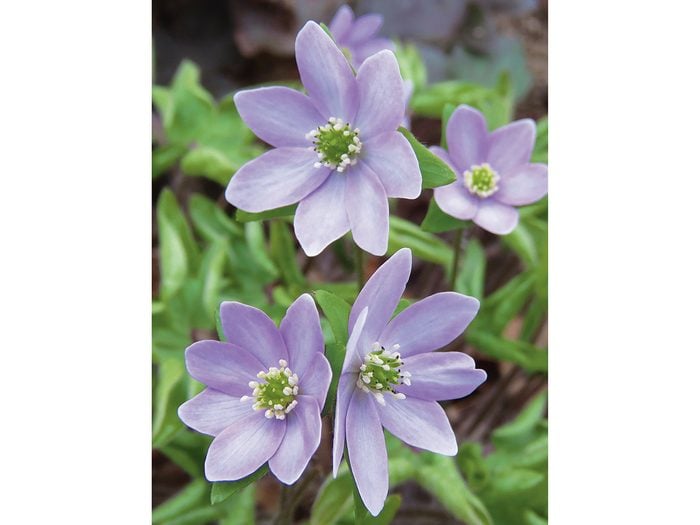
Spring flowers in Ontario
Most springs, the snow hardly seems to have melted when spring flowers emerge in a way that seems impossible to imagine. How could all that beauty be sleeping under the snow? If you live near deciduous woods, spring is the time to go for a walk and discover spring wildflowers.
As early as the last week in April and possibly earlier, blooms will start to appear. The show will continue into and through the month of May. Here in Exeter, Ontario, the spring flowers are breathtaking. I head out each year to enjoy and capture the beauty with my camera. Oftentimes, I am able to identify the flowers for people I meet along the trail. I encourage them to look to the side of the trail where there are logs rotting. Many flowers are tiny and are therefore overlooked. Two such examples are plants called spring beauty and Dutchman’s breeches; they have delicate blooms that are sometimes hidden by leaf debris on the forest floor. Both are showy and unique but no match in size for trilliums and marsh marigolds. The colour, size and shape of all these blooms create one of nature’s finest shows, and with the MacNaughton-Morrison Trail on my doorstep, it’s readily available to view.
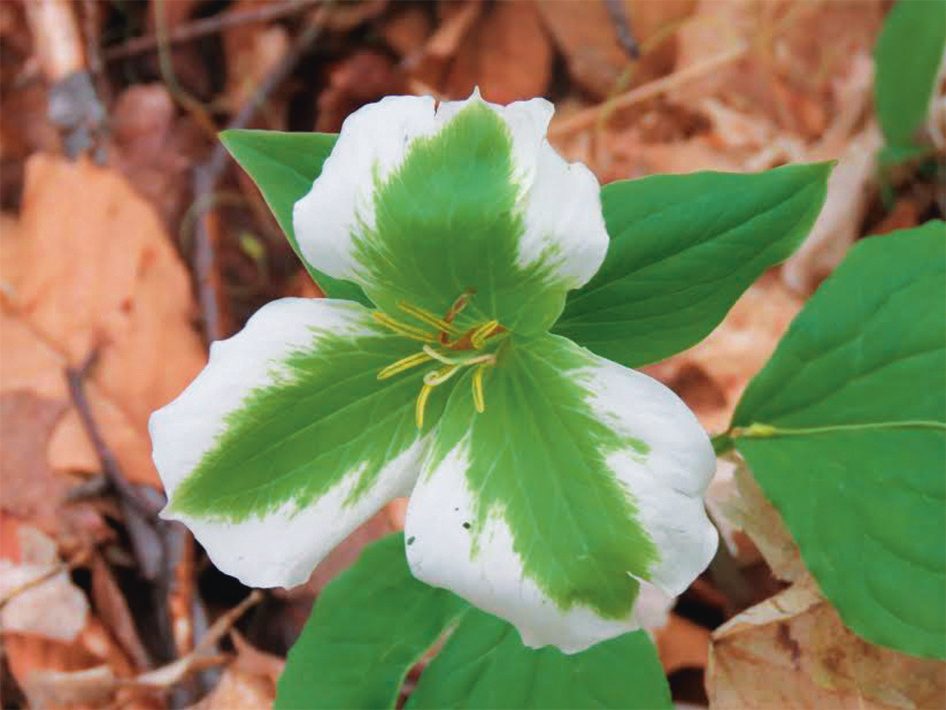
Green trillium
I learned the names of many of Ontario’s spring flowers as a child while following my two older sisters through the bush and along the river, which was close to our home. School outings also taught me about spring flowers, species of trees and the names of many songbirds. We learned to look down for the flowers and up for the birds and trees. We were taught to enjoy the beauty of the flowers but never to pick them.
White bloodroot flowers will be among the earliest blooms you are likely to discover. The plant gets its name from its underground stems that contain a red juice. The beautifully shaped leaf wraps around the bud as if it were a blanket, and as the flower opens so does the leaf.
Ontario’s provincial flower is the white trillium. It’s always a thrill for me to find a large patch of white trilliums, but I’ve also been fortunate enough to find red, green (above), double-white and double-green trilliums.
Find out if you could actually be arrested for picking a trillium.
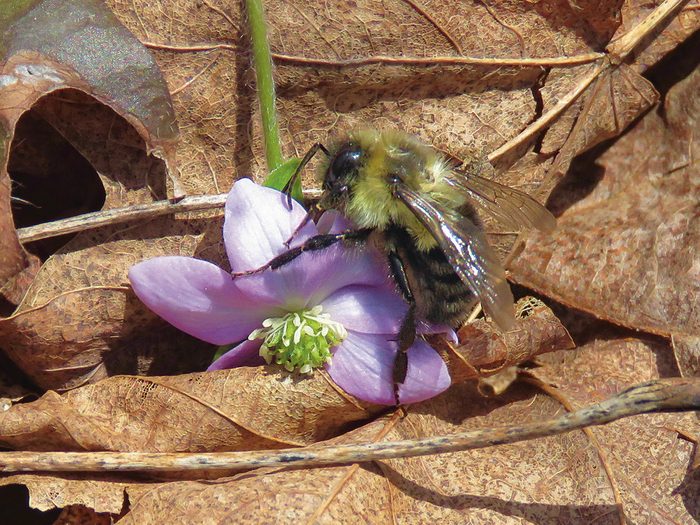
Hepatica
Hepatica blooms are tiny, and range in colour from pink to purple. They’re often found on and around decaying logs. Last spring, I watched as the bees tried to land on the tiny blooms (above). The bees were too heavy and the blooms bent completely over and touched the ground.
Dogtooth violets, also called trout lilies, are common here and can be found in large patches that rival the size of white trillium patches. Most often, the blooms will be yellow but I found some white ones four years ago and now I check that location every spring—sure enough, they are still growing there.
Take a look at some of the best nature photography from across Canada.
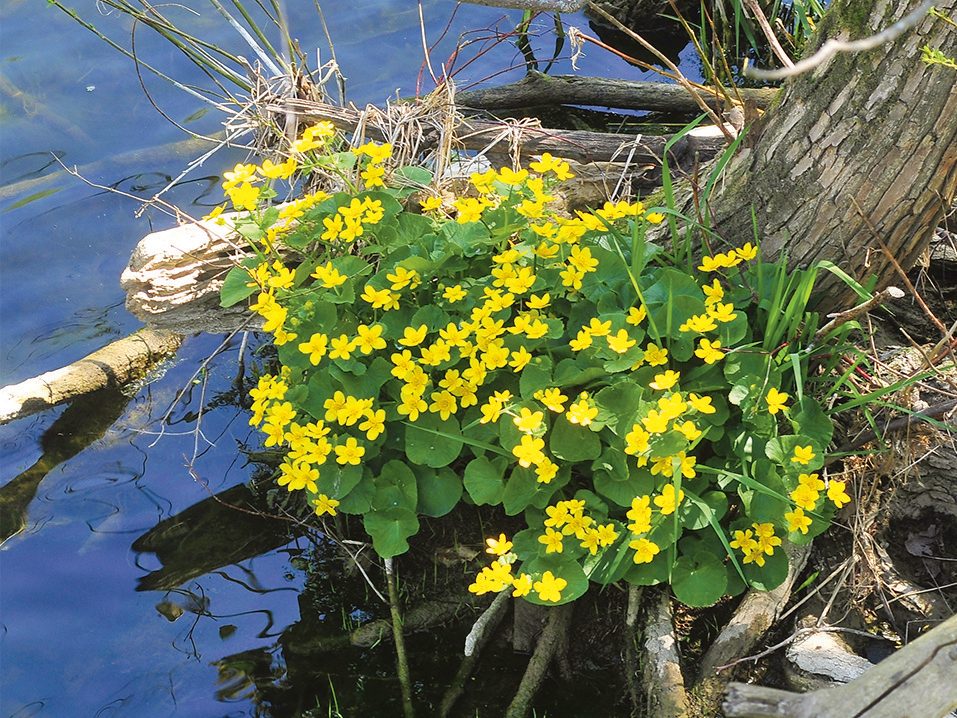
Marsh marigolds
Marsh marigolds like to have their feet—meaning their roots—wet, so they put on a show of yellow along river banks, in ditches or in wet woodland areas.
Find out the fascinating story behind every provincial flower.
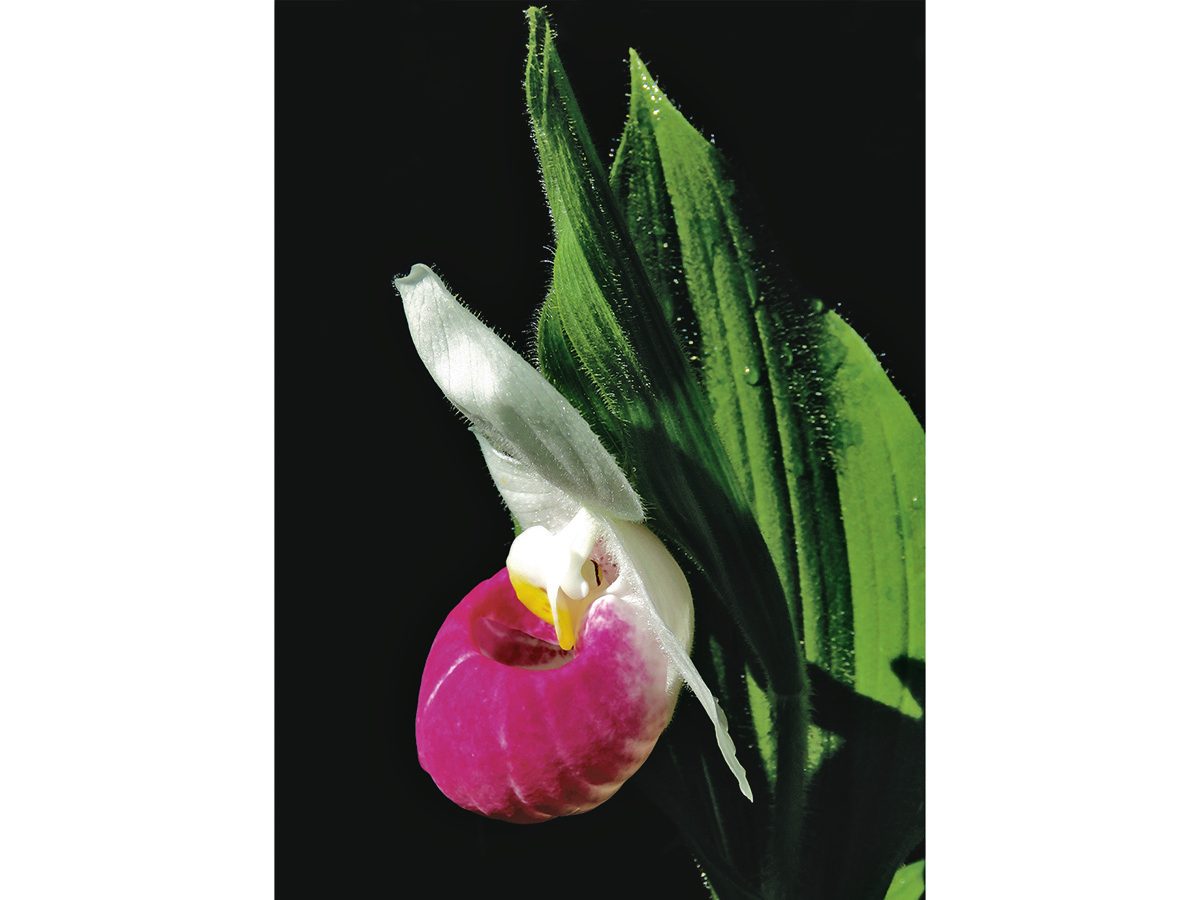
Lady’s slipper
Finally, I have to tell you about the orchid of the north known as the lady’s slipper. It is often the last spring wildflower to bloom so look for them in early June. Also known as moccasin flowers, they have two exotically twisted petals that reach out to the sides, with a third, larger petal below that forms the slipper. Bumblebees are attracted by the colour and scent and enter the “slipper” in search of nectar. They find none, but in the process pollinate the flower and collect more pollen to deposit in other blooms. Without the bees, pollination would not occur.
If you have a naturalist group in your area, make contact with them as they often organize spring hikes and welcome people to join them and learn from their experience. It’s a great time of year (before the insects are out) to concentrate on learning the names of Ontario’s spring flowers. Why not get down on your knees and explore!
Next, check out this gorgeous gallery showcasing Canada in bloom.